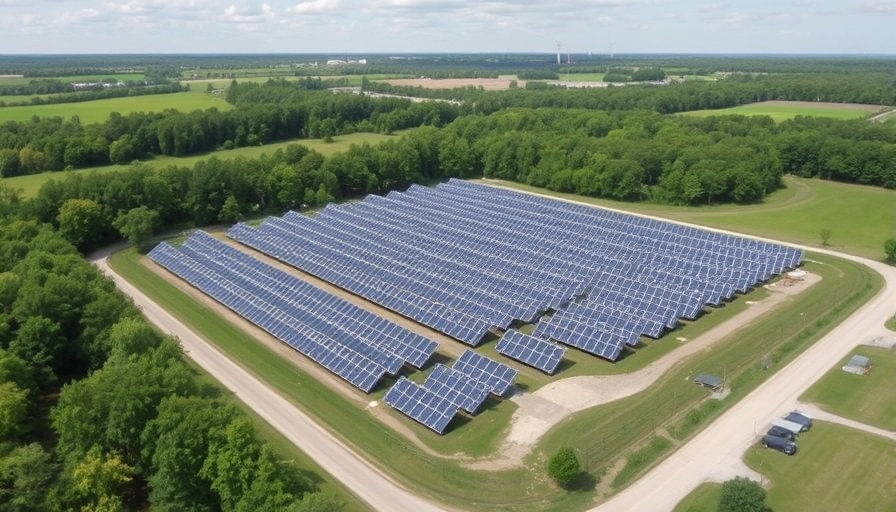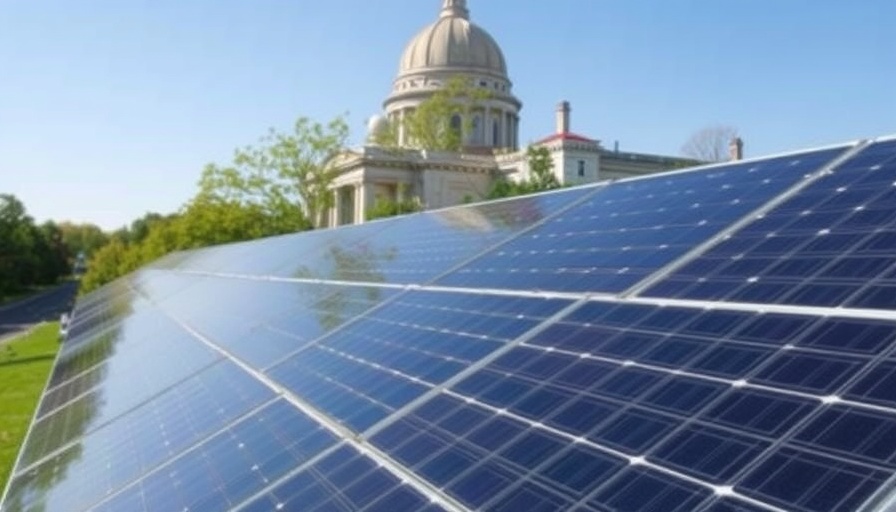
Ohio Supreme Court's Decision: A Win for Renewable Energy
The Ohio Supreme Court recently made headlines by approving a substantial solar project, defying local opposition. This decision, allowing for the development of a 325 MW solar facility, marks a turning point in the state’s push towards renewable energy. With many homeowners and eco-conscious consumers watching eagerly, the ruling could set a precedent for future solar initiatives amidst the rising energy costs.
Understanding the Local Opposition
Despite the benefits of solar energy, local residents expressed concerns regarding the solar project, citing potential impacts on land use and local ecosystems. Issues such as potential disruptions to agriculture and changes to the landscape were at the forefront of debates. Yet, the court’s decision underscores a growing belief that the benefits of renewable energy—including job creation and reduced dependency on fossil fuels—outweigh these local concerns.
The Bigger Picture: Solar Energy in Ohio
Solar energy is increasingly becoming a viable option for many homeowners in Ohio, especially those looking to reduce energy costs. The state has been expanding its solar capacity and this ruling supports broader efforts to promote green energy solutions. For eco-conscious consumers, the approval of a significant solar power project can lead to an increase in property values while contributing to sustainability targets.
Jobs and Economic Growth: A Ripple Effect
According to the Solar Energy Industries Association (SEIA), solar power projects like the one approved can lead to substantial job creation both during construction and throughout project operations. Statistics show that the solar sector is among the fastest-growing job markets, with thousands of new positions being projected in the coming years. Economists believe that Ohio's decision can inspire investments and growth that ripple through local economies.
Future Predictions: The Path Ahead for Renewable Projects
The ruling sets an encouraging precedent for renewable energy projects in Ohio and potentially across the nation. Analysts predict that as states continue to push for cleaner energy sources, we may see more legal challenges concerning local opposition. This scenario presents an interesting dynamic between local interests and state imperatives, shaping how future developments in renewable energy are handled.
Counterarguments from Local Community Perspectives
It is essential to recognize the legitimacy of the local opposition’s concerns. Many advocates for local communities argue that while renewable energy is vital, it should not come at the expense of farmland or natural ecosystems. Future projects must strive to balance development with environmental preservation, promoting not only economic growth but also community well-being.
How Homeowners Can Benefit From Solar Energy
For homeowners, the thriving solar market means more options for reducing energy costs. With incentives and rebates available for solar installations, many consumers can capitalize on long-term savings while improving their property values. Moreover, those who invest in solar technology are not only helping themselves financially but also contributing to a larger narrative of sustainable living.
Conclusion: A Call to the Community
As the Ohio Supreme Court’s ruling showcases, the discussion surrounding renewable energy is rapidly evolving. While community concerns must be respected, the pathway forward seems increasingly aligned with sustainability. Homeowners are encouraged to consider how they can contribute to this green energy movement, exploring options like solar panels, which not only promise cost savings but also play a critical role in the global push for a greener future.
In the growing landscape of renewable energy, understanding and participating in the discussion surrounding local projects will empower consumers, making them active stakeholders in their community's energy future.
 Add Row
Add Row  Add
Add 



 Add Row
Add Row  Add
Add 
Write A Comment